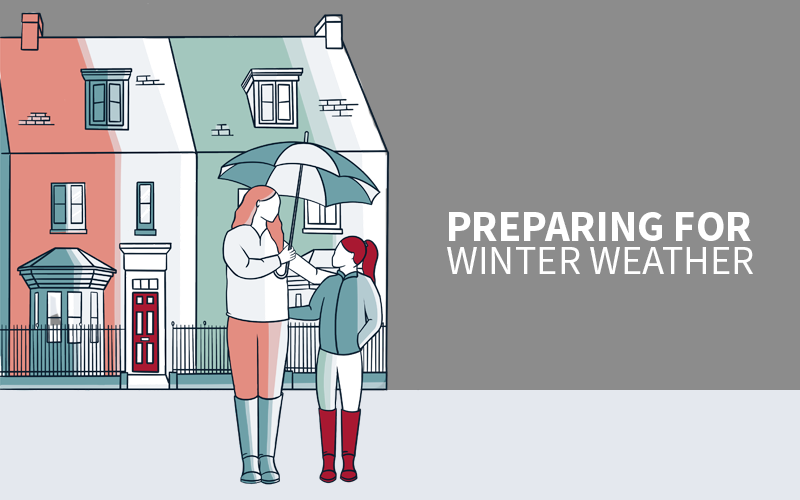Winter has come around again, and your clients need to be prepared for a change in weather conditions. There are many standard practices and ways to ensure that homeowners aren’t caught cold during the icy grip of winter.
Throughout our guide, we’ll highlight some of these routines whilst providing you with common hazards that can pose a risk to homes.
Identify, Assess, Act!
Storm Damage at Winter Time
We all know that storms can cause many problems to buildings and outside possessions, with strong winds and heavy rainfall becoming a headache for many homeowners. On top of this, wayward debris can become an ongoing problem for properties.
If it’s safe to do so, recommend removing any tree branches or other potential objects that might impact your client’s building. It’s better to be safe than sorry – remind them to call experts to aid them should the item pose a potential risk to their property.
Flooding and Escape of Water
Rainfall, ice, and snow are often accompanied by the increased chance of flooding and escape of water, which can be devasting for policyholders. Therefore, we recommend getting your client to check their external pipework regularly to check for any potential leakages. Below are some common signs you might come across in your property.
- A noticeable drop in water pressure
- Hissing noises near internal stop tap
- An unexplained change on your bill
- Noticeable water or damp areas, such as walls and floors
- Unexpected changes to your water bill (if on a water meter)
Winter comes hand in hand with the increased risk of water damage to properties due to heightened rainfall and frost, along with strong winds and harsh weather conditions testing building integrity. Certain features of the home may be affected more than others, such as pipes, toilets, showers, and baths.
Checking in with a plumber or local water authority can help reduce the chances of water leakage and damage. If you suspect a leak in your home, make the appropriate arrangements to resolve the potential issue.
Impact on Buildings
Substantial snowfall can weigh a lot more than homeowners might expect, which strains areas of structures, such as the roof. In addition, as the weather gets colder, this snow can freeze and compress, becoming much heavier. When this snow melts, the water residue can sink through the gaps of a building, which will need to be addressed to prevent further risk of damage.
Clearing gutters can significantly reduce the risk of debris and snow building up in your clients’ drainage systems, avoiding any potential headaches later down the line. Debris can include anything from general dirt and similar elements to leaves and sticks. For example, if there is a tree close to the roof, then it’s likely that debris might make an appearance from time to time, especially after autumn.
Roofs should be checked twice a year and maintained when necessary to ensure the structure is undamaged. More commonly, the linings of your client’s home can degrade and begin to thin over time, which can cause leaks. If your client has access to a loft space, then checking the linings of their property can lower the risks of damage being caused by weather and similar factors.
About Us
Source Insurance has been helping brokers and their clients for over 25 years, so we know that support is needed from time to time. Contact our customer support team at 02920 265 265 or visit our website at www.thesource.co.uk.
Register to become a Source Go member today – find your clients perfect protection!









